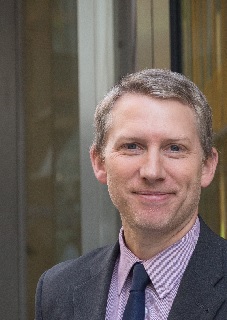In the US, there is cautious optimism and not much negative sentiment among real estate investors and fund managers. Many witness the same dynamic as in Europe – the large amount of capital targeting the real estate sector. Some see the supply-demand imbalance of capital as a time to sell, but that is the extent to which there are negative feelings at all about the current market.
To help take the temperature of capital markets, I went to New York from where most of the largest real estate investment managers operate and who together control much of the equity, some of which gets to Europe. What was noticeable was that there seems to be a lot more attention being paid to ‘conscious capital’ or environmental, social and governance (ESG) policies for short.
It has shocked some folk that two major shareholders in Apple – Jana Partners and California State Teachers’ Retirement System or CalSTRS (the latter being a major investor in private real estate) voiced concerns in public over the addictive qualities of the iPhone. They urged Apple to create ways for parents to restrict their children’s otherwise constant access.
Tying in with the theme, a few weeks after the Apple letter, over at the IREI conference in southern California, the keynote speaker was conscious capital doyen, Raj Sisodia. He gave pause for thought in terms of how much can be done from rebuilding initiatives to creating more sustainable infrastructure that can translate to good business.
Around the same time, Callan, an advisor to institutional investors, revealed the findings of its latest survey, suggesting adoption rates among investors of ESG factors in investment-related decision-making stands at around 37%, the same as in 2016. The study also concluded that the larger the fund manager, the more they are incorporating ESG. But there is clearly a long way to go before 100% do.
Because the US seems late-stage in the real estate cycle, overall no one is saying it is a good time to go and put a lot of money to work there, though obviously for many people it is their job to carry on investing. This is why you see many groups trying out niche sectors.
I came across an institutional investor with a specific issue, but one that I think applies quite generally. It has a significant portion of its portfolio (around 15%) in legacy fund investments that were made prior to the 2008 Global Financial Crisis. Having such a level of ‘shock’ in the portfolio is holding back this and other investors from putting more to work.
At the same time, many investors are being advised by consultants to strip back the number of managers they invest with, which makes sense from a portfolio managing standpoint but at the same time restricts them to the bigger firms. Some of them can end up with 5-10% of their portfolio with one manager, so they have to really trust them. They are far less likely to take such a gamble on a first-time fund if they stick to managers they know. That’s a big issue at play in the US and we see it here in Europe too.
Now the good news is that some investors see Europe as a relatively more attractive market than the US today, which continues to be a couple of years ahead in the cycle. They also find Europe to be a little more straight forward in the opportunities than, say, Asia where many do invest. One investor is now ‘overweight Europe’ with perhaps 25% of the portfolio, having played it differently over the cycle since 2008, ranging from investing with a lesser known sharp shooter-type manager at the start to a larger one when it looked like Europe’s financial institutions would disgorge a lot of assets. Since then it has enhanced the portfolio with country/region-specific managers.
Given the perception that Europe has a couple more years left in terms of the market cycle, it is not surprising we are seeing new entrants from the US. They are buying or taking stakes in European boutique real estate investment managers because they lack a platform to offer their clients exposure. New York Life Insurance Company and its European affiliate Candriam Investors Group are a perfect recent example of that.
Here you have a very large US insurance and investment management group getting exposure to European real estate by buying 40% of Tristan Capital Partners. From the US perspective, it isn’t the best or the worst time to strike such deals. For European managers on such an investor’s hit list, it isn’t a bad time to have a conversation either.
Robin Marriott is deputy editor-in-chief of PropertyEU




























